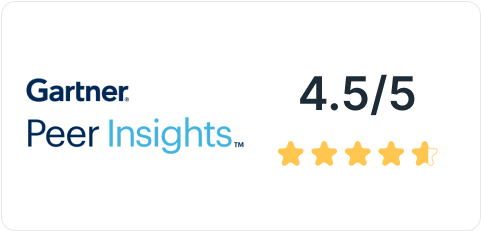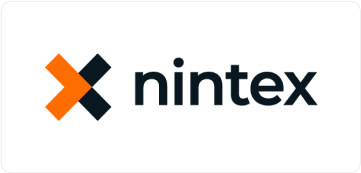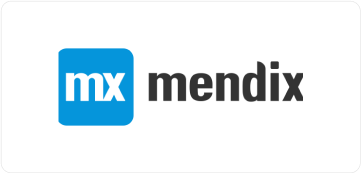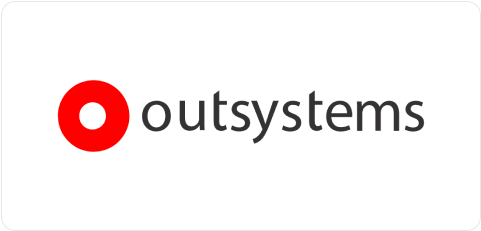
Top 7 Pipefy Alternatives in 2026
Low-code development is the most prominent and effective solution for enterprises that want to scale their app development efforts with existing resources. Low-code platforms offer visual and intuitive tools for businesses to optimize and accelerate their development process.
By 2024, over You, Now 65 percent of application development will be low-code.
Pipefy is one of the major low-code platforms that allows IT and citizen developers to design, automate, and streamline workflows across the organization. The platform lets users map every business process's dependencies, tasks, and deadlines, establishing a smooth workflow.
But there are also some downsides to Pipefy, including a steep learning curve, slow integrations, and limitations to reporting and customization capabilities. When considering Pipefy, it's also necessary to explore Pipefy alternatives to find a tool that perfectly aligns with your business requirements. Here are some great options to choose from:
Kissflow
Kissflow is a low-code development platform that empowers professional developers and business users to build custom workflows and applications. The platform provides users with visual modeling tools, drag-and-drop elements, and pre-made templates to launch custom enterprise apps quickly, with minimal coding and effort.
By providing a centralized dashboard for developers and non-technical users, Kissflow fosters collaboration and accelerates development initiatives. It is highly scalable, customizable, and adaptable, allowing businesses to quickly adapt to changing market dynamics.

Kissflow aligns business with IT and accelerates digital transformation across the organization. With both low-code and no-code features, it supports collaborative development and lets developers and domain experts build departmental applications in weeks instead of months. The governance layer allows IT to maintain control and security over the development environment without restricting innovation.

-
No-code workflows
Create powerful and automated workflows using drag-and-drop interfaces without any coding
-
Powerful integrations
Integrate internal and external systems with business rules.
-
Customizable user interface
Create custom user interfaces for apps with pre-built widgets.
-
Form builder
Create simple yet dynamic automated forms to capture high-value data.
-
Low-code/no-code development
Build apps quickly, even with minimal technical knowledge, to increase user adoption and decrease time-to-market.
-
Robust integrations
Connect your apps to critical systems with Kissflow’s extensive connectors and triggers.
-
Custom role-based access
Grant controlled access to various apps and data by assigning users to specific roles.
-
Case management
Optimize case management with Kissflow Boards for more flexibility and visibility into complex processes.

"I like that the Kissflow platform is completely versatile since its functionality can be customized and adapted to the requirements of each of our departments separately. It is accompanied by an intuitive interface with a relatively short learning curve, which provides the opportunity to not have extensive prior preparation to be able to implement its tools."
Nikki H.
Account Supervisor, Marketing and Advertising
Nintex
Nintex offers a powerful platform that allows organizations to discover, automate, and optimize business processes. It is a workflow management and business process management solution offering drag-and-drop tools, a user-friendly interface, and extensive third-party integrations.

-
Workflow automation
Users can design and automate end-to-end workflows without complicated coding.
-
Form designer
Users can build and manage digital forms to effectively collect data.
-
User-friendly interface
The platform is user-friendly, making it easily accessible to users of all skill levels.
-
Templates
With templates, users can quickly create applications without building them from scratch.
-
Mobile accessibility
Accessing Nintex on mobile devices and managing workflows on the go is possible.
-
Low-code development
The drag-and-drop interface allows users to build apps with minimal to no coding, reducing development time.
-
Effective error management
Nintex allows users to automate the process of capturing errors and establish custom logic to handle those errors.

"you can configure a good looking form very fast.Complicated workflow actions which took hours to configure in SP workflow usually take minutes here. Nintex support is very fast and informative!"
Andrii B.
SharePoint Engineer
-
Limited database options
Data storage is only available through external integration
-
Poor documentation
Limited documentation leads to a steeper learning curve.
-
Lack of developer support
While Nintex is easy for business users, developers may find it somewhat restrictive.

"There is quite a bit of lag time on the front end, and I understand that it's doing a lot in the background, however in this day if something doesn't happen instantly it feels slow. We also use the knowledge library side, and currently you have to tag it, but it won't allow you to really search multiple words at one time, which is frustrating. So you have to tag specific words in hopes that people will search for the right word."
Megan S.
Instructional Design Manager
ProcessMaker
ProcessMaker is a low-code platform that allows users to automate business processes, streamline workflows, and build custom apps. With powerful features like drag-and-drop interface, third-party integration, and real-time reporting, the platform provides enterprises with the tools to automate and streamline their day-to-day operations.

-
Easy form building
Users can easily create forms and display screens for different workflows.
-
Reporting dashboards
Users can filter through data and automatically generate charts and reports based on it.
-
Process modeler
Users can build apps by dragging and dropping tasks and decision points onto the modeling canvas and adding data connectors and forms.
-
Powerful integration
The platform integrates with many popular tools and legacy systems.
-
Easy replication and updation
Replicating and updating processes only takes a few clicks.
-
AI-powered workflow
The AI process generation tool has a text-to-process feature that can turn a description into a ready-made workflow.

"I appreciate the platform's flexibility for implementing custom workflows and how easy it is to make adjustments when business rules change, as well as the API integration capabilities. Complex workflows with many actors involved can be created in a fraction of the time it would take using a traditional development approach."
Caio G.
Digital Transformation Manager
-
No automation testing capabilities
There is no way to test automation for business processes.
-
Outdated documentation
While comprehensive, the documentation is not always up-to-date.
-
Not entirely no-code
ProcessMaker requires some coding or support from developers to build out processes.

"I started training for PM2 and attempted to rework an add on from another campus for our workflow. I found the development process to be tedious and unncessarily complicated due to the multiple layers involved in the stack: PHP (old outdated library too), triggers for db's that operate independently of the PHP code. Old libraries like Gulliver that were a tad buggy."
Eric T.
Associate Director
Pega
Pega is a low-code platform providing business process and customer relationship management capabilities. Low-code and no-code tools allow users to create enterprise apps and streamline business processes without writing any code.
The platform is customizable and modular, enabling businesses to achieve scalability and speed for app development.

-
Omnichannel UI
The adaptive and responsive UI makes multi-channel deployments easy to build and modify, creating a consistent user experience across different channels.
-
Workflow automation
Users can automate workflows to increase responsiveness and efficiency.
-
Adaptive decision manager
It retrieves and extracts data to help users make real-time decisions based on data analytics and business rules.
-
Continuous development
Continuous integration and delivery (CI/CD) enables users to fine-tune their apps with advanced business rules.
-
Scalability
The platform helps businesses achieve consistent scalability through rapid application development.
-
Seamless integration
The platform provides robust integration capabilities, allowing users to connect internal or external systems without code.
-
Low-code development
With a drag-and-drop visual editor and reusable components, Pega supports low-code development and allows users to build apps with minimal coding.
-
Steep learning curve
It can take some time for business users to get used to the platform
-
It's not entirely no-code
Many highly customized solutions require advanced technical expertise. Business users may need to use the advanced features.
-
The integration process is complex
Even with a comprehensive list of integrations, the actual integration process can be complex and time-consuming.
Appian
Appian is a low-code platform that allows organizations to build custom enterprise applications and workflows. The platform can improve efficiency and maximize resources by streamlining processes across the organization. It provides full-stack automation and AI-powered development to help companies rapidly scale their development and digitization initiatives.
Check out: Kissflow vs Appian: A Detailed Comparison

-
Visual editor
With visual design tools and pre-built templates, IT developers and business users can build applications and streamline processes faster.
-
Digital process automation
Users can implement efficient and low-maintenance automation in their workflow using business rules, AI, and RPA.
-
Data fabric
Appian provides an integrated data layer that connects data across the organization and unifies data silos
-
Social collaboration
The platform provides social collaboration tools to help teams stay connected and improve visibility across the development process.
-
Built-in governance
Users can create a custom governance framework to ensure optimum compliance and security.
-
Real-time reporting
Users can generate in-depth reports in real-time by leveraging the platform’s AI and ML capabilities.

"Appian is a low-code automation platform that helps organizations build applications and automate business processes quickly. The platform aims to solve various problems related to application development and business process management."
Arulanandham K.
Practice Head of Digital Integration / Hyperautomation Expert
-
Limited customization
Even though Appian offers several customization options, there are limits to what you can do.
-
Complex
The platform can be difficult to navigate and manage for business users, especially when handling large projects.
-
Limited documentation
The official documentation by Appian only covers basic features and information.

"The overall look and feel can be improved to be more user friendly, some small wins include mapping the user experience journey to help make button clicks and placement easier"
Shane C.
Management Consultant
Mendix
Mendix is a low-code development platform that enables enterprises to accelerate their application development lifecycle. The platform can automate the development process for better business outcomes and scalability.
It provides custom IDE and built-in collaboration tools. Business users can build applications with visual tools, while IT developers can use external coding IDEs to develop and deploy apps in the programming language of their choice.
Check out: Kissflow vs Mendix: A Detailed Comparison

-
AI-assisted development
The AI-powered virtual co-developer bot guides users through modeling and configuring their application logic, delivering applications with improved quality and consistency.
-
Intuitive development
The platform offers an intuitive development environment for pro developers and citizen developers.
-
Collaborative project spaces
The Mendix Developer Portal provides a centralized dashboard for developers to manage all their app projects in one place.
-
Templates
The platform provides app templates that can be easily modified with visual development tools for different use cases.
-
Seamless integration
Database connectors can easily apps Mendix with internal and external systems.
-
Flexible user interface
Users can create responsive and consistent pages across different channels.
-
Reusable components
Users can quickly develop and deploy new applications without starting from scratch every time.
"I like how quickly on can start developing in the Mendix application even with very little knowledge of coding. The rapid course also gives you a great boost."
Subhojit P.
Associate IT, Consultant
-
It’s not no-code
The platform has advanced features geared more towards pro developers than business users.
-
Not suitable for complex requirements
The platform may not be suitable for complex or unique applications.
-
Limited customization options
Incorporating custom features into applications can be complicated.
OutSystems
OutSystems provides a low-code platform for accelerating and streamlining enterprise application development. It provides a drag-and-drop visual editor to help users digitize and automate internal processes and accelerate their organization’s digital transformation journey, without extensive coding.
Check out: Kissflow vs Outsystems: A Detailed Comparison

-
Full-stack visual development
Users can build the frontend and backend of applications with a visual editor.
-
Application templates
Various pre-built templates and connectors are available to accelerate app development.
-
AI mentor studio
It offers actionable suggestions to help users follow best practices and avoid common mistakes when developing apps.
-
Integration
OutSystems provides robust integration with other APIs and external systems, making connecting data from existing sources easy.
-
Flexibility and scalability
The platform makes modifying and updating applications easy as business requirements change over time.
-
Intuitive and robust
OutSystems offers a robust and user-friendly development environment.

"Because of OutSystems, you can develop Apps and websites very fast. This is great if you use an Agile Scrum methodology. The business needs change a lot, because of the fast development you can always provide the business needs and update the apps fast."
Michiel M.
Low-Code Architect & Tech Lead
-
Not entirely no-code
While OutSystems can be used by business users, some coding may still be required to leverage all the platform's features.
-
Performance issues
There can be some performance issues when executing apps with high resource requirements.
-
Sudden updates can lead to delays
When new updates are introduced, users must deploy and recompile the applications.

"Huge expectations in the beginning. Not met in real life. Important llicense costs"
Maxence M.
Digital Delivery Manager
Best Pipefy Alternatives for Low-Code Development: Kissflow
Future-ready enterprises readily adopt low-code development to accelerate their digital transformation efforts and get ahead of the competition.
Low-code platforms take a visual approach to app development, reducing the need to code. These platforms give business users and domain experts the tools to build applications independently, decreasing IT backlog and reliance on IT.
When it comes to Pipefy alternatives, Kissflow is an obvious choice because of its robust drag-and-drop features, numerous templates, and powerful workflow automation. Kissflow helps organizations encourage collaborative development by including business users and IT developers in the app development process.
It has a form builder, WYSIWYG editor, and comprehensive training resources to get started easily. Sign up on Kissflow to learn how it can streamline your enterprise’s internal processes and operations.
Make the smarter switch to Kissflow - Your best Pipefy alternative
Related Articles



-May-19-2025-11-22-41-6975-AM.png)









